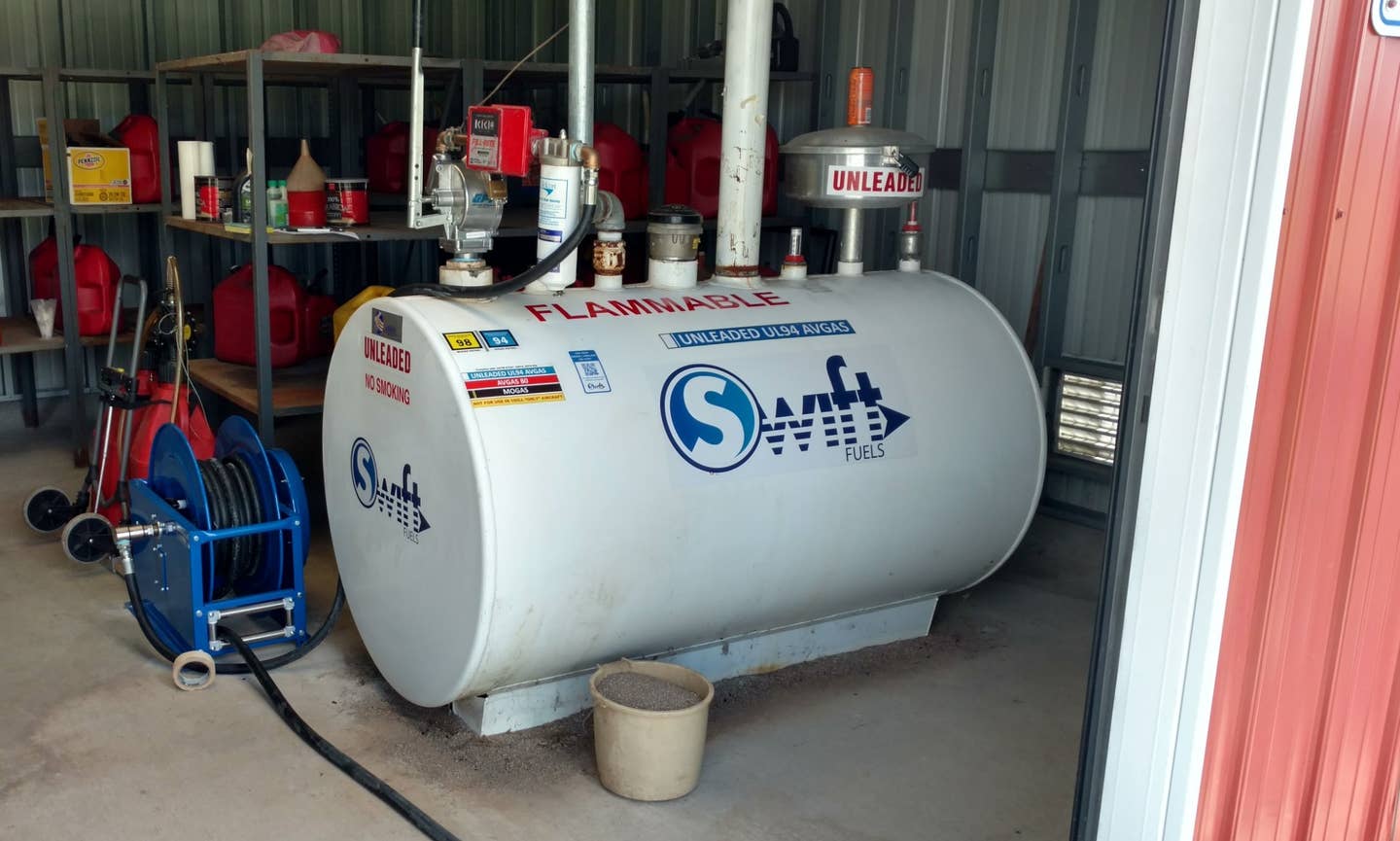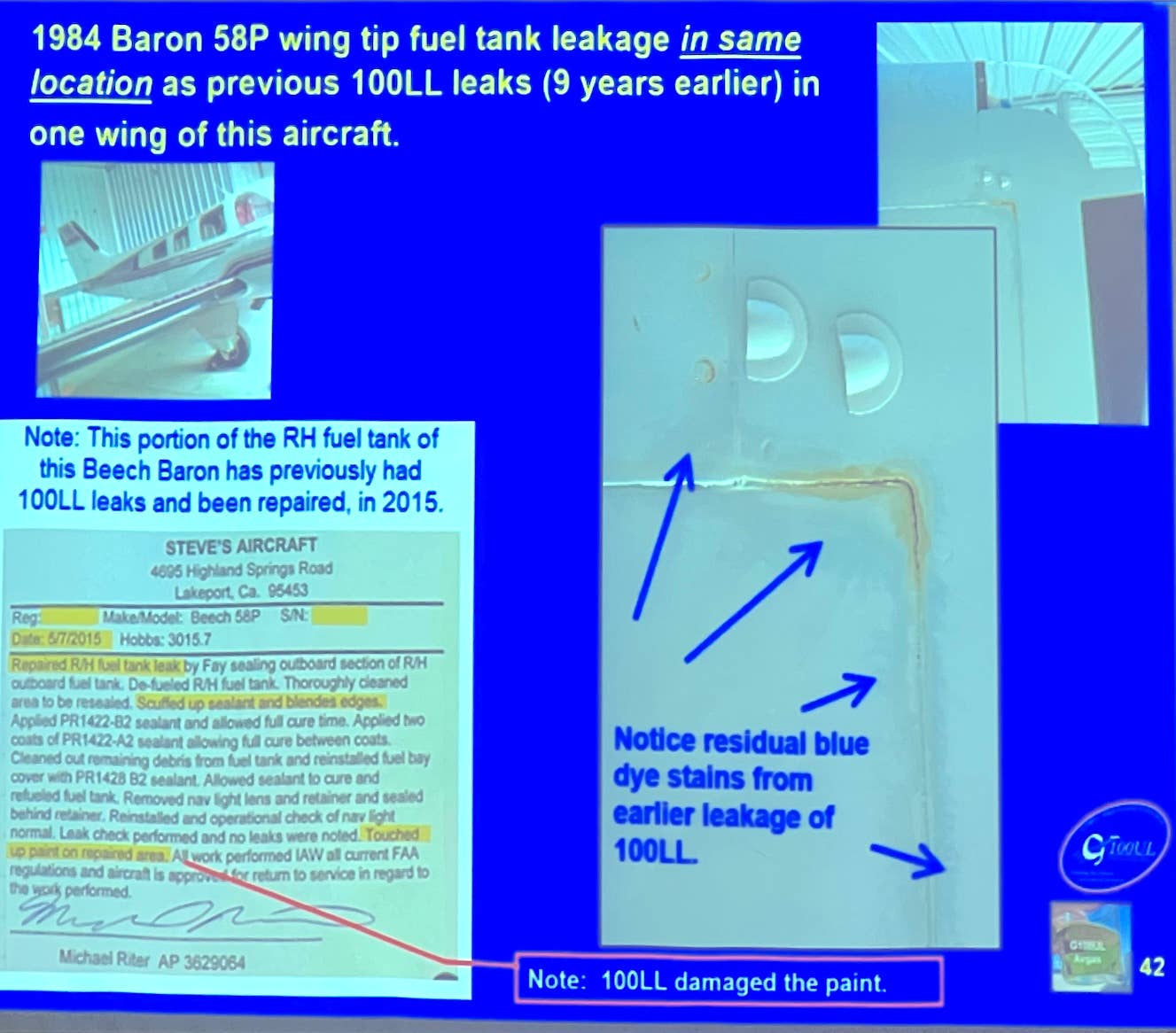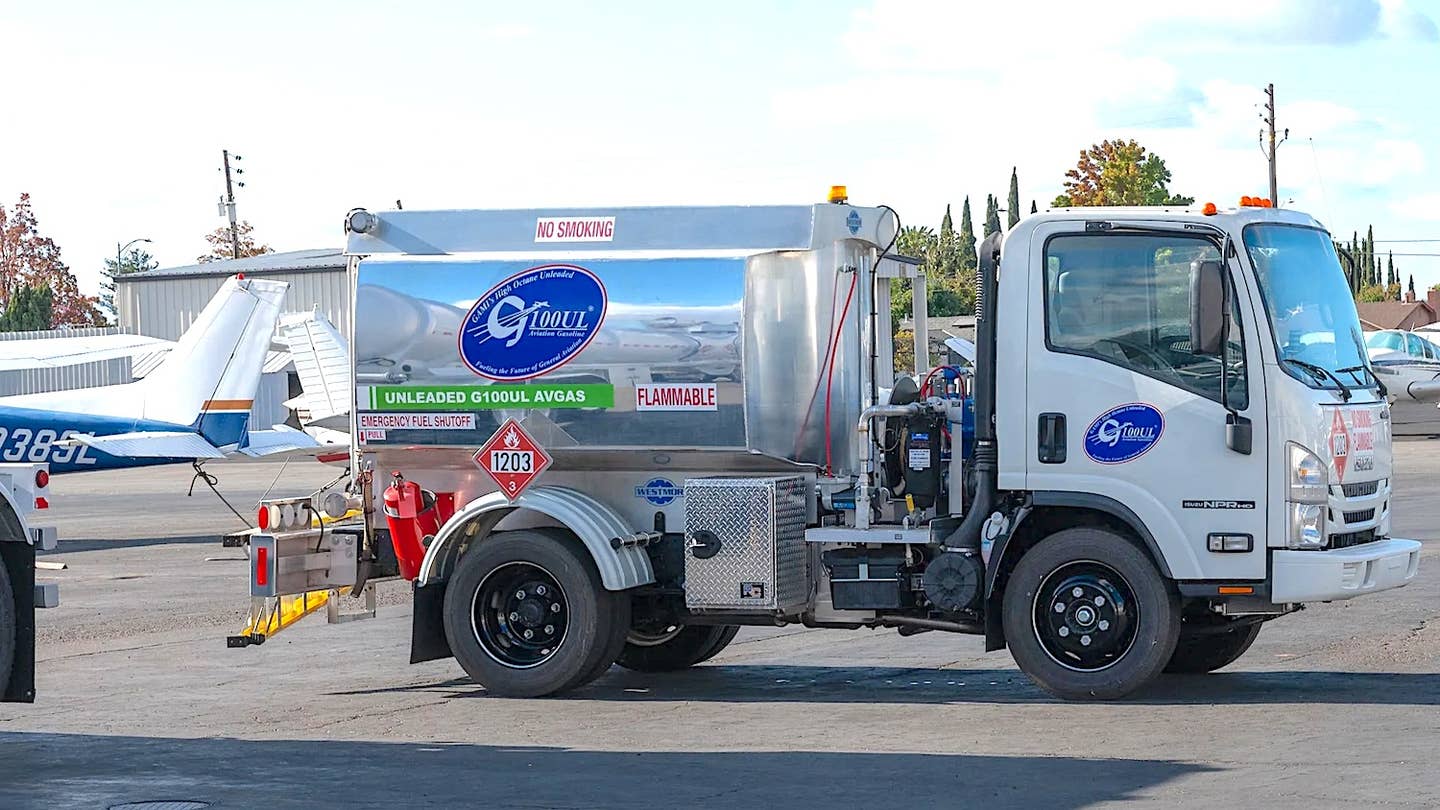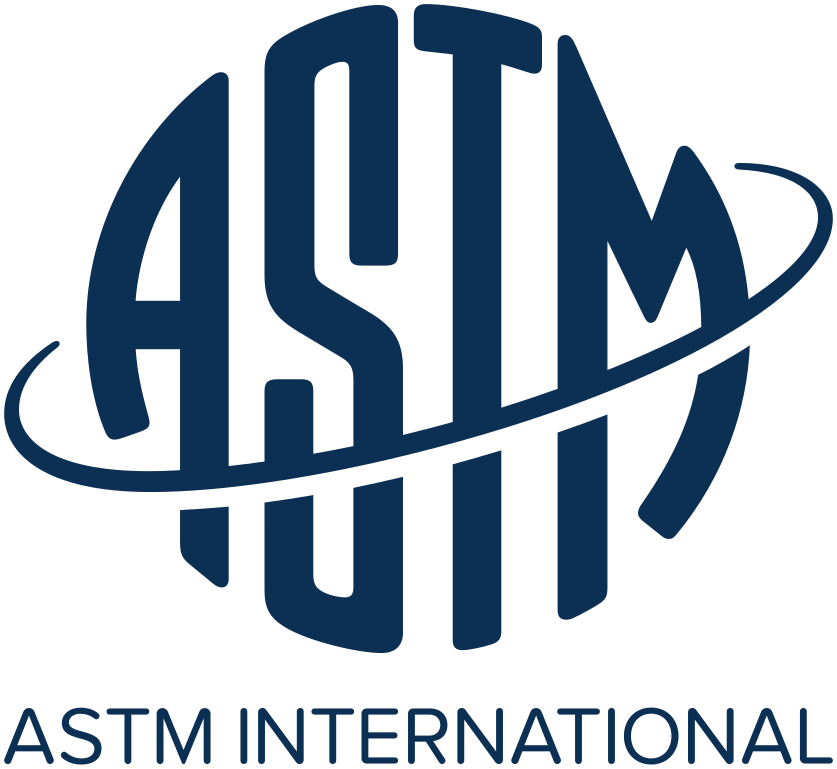Which Oil Should I Use?
There’s a whole lot more to choosing the best oil for your Continental or Lycoming powerplant than most aircraft owners realize. You can’t necessarily believe everything you read in the oil company ads. Here are some of our recommendations concerning aircraft engine oil. You just might be surprised.

 Oil is the lifeblood of your engine. To achieve maximum engine life, it is crucial to choose the correct oil and to change it regularly at the correct intervals using the correct procedures.
Oil is the lifeblood of your engine. To achieve maximum engine life, it is crucial to choose the correct oil and to change it regularly at the correct intervals using the correct procedures.
If you were flying behind a turbine engine, the choice of oil would be easy. You'd simply choose the slipperiest, longest lasting lubricant you could find, and that would be a 100% synthetic oil. End of story.
But when it comes to the piston engines that power our airplanes, the issues are much more complex. That's because the oil in a piston engine is called upon to do a lot more than simply lubricate. The oil must also serve as a coolant, a cleanser, an acid neutralizer, a sealant, a hydraulic fluid, and a preservative. Finding an oil that performs all of these functions adequately well can be a tricky business.
Single-Grade Oil
Straight mineral oil such as Aeroshell 100 (red can or blue plastic bottle) is a petroleum-base oil without the usual cleansing agents or additive package. It is commonly used as break-in oil for new steel or chrome cylinders. Its "claim to fame" is that it isn't particularly good at either lubricating or cleansing! The resulting high levels of friction may speed up the break-in process, but this oil isn't approved for long-term use in your engine. If you use this stuff for break-in, you should plan to drain it within 10-25 hours (the sooner the better) and replace it with a high-quality ashless dispersant (AD) oil.
Single-grade AD oil such as Aeroshell W 100 (SAE 50) or W 80 (SAE 40) is a straight-weight petroleum-base oil with an additive package of ashless dispersant cleansers, lead scavenging agents, and acid neutralizers. It offers good lubrication and good cleansing action. Single-grade oil is especially good at protecting engines against internal corrosion, because it is very thick at ordinary room temperature and sticks to engine parts without stripping off as readily as multi-grade oils.
However, single-grade oil is not recommended for non-preheated cold weather operation. When starting in sub-freezing temperatures, single-grade oil may be too thick to provide adequate lubrication in the first minute or two of engine operation.
Multi-Grade Oil
Multi-viscosity petroleum-base oil such as Phillips X/C 20W-50 is similar to single-grade AD oil, but has a viscosity index ("VI") enhancer which causes the oil to maintain a more constant viscosity over a wide range of temperatures. This oil remains much thinner and more easily pourable at room temperature than single-grade oil. This is a distinct advantage for cold weather starting if a preheat (or heated hangar) is not available. On the other hand, multi-vis oil will strip off engine parts much more readily during periods of disuse, so it doesn't provide nearly as good corrosion protection as single-grade oil does.
Fully synthetic oil such as Mobil AV-1 (no longer available) is a multi-vis synthetic oil with an AD additive package similar to other AD oils. Synthetic oil has better lubricity (or slipperiness) than petroleum-based oil, as well as several other advantages. Unlike petroleum products, a fully synthetic oil does not carbonize (or "coke") under high heat, nor does it lose its viscosity with prolonged use.
On the other hand, synthetic oil strips off parts readily (because of its low viscosity at room temperature and its extreme slipperiness). It also is poor at cleansing, because its molecules are too slippery to hold scavenged lead, carbon, and other particulates in suspension very well. It is this poor cleansing action (particularly with regard to lead) that was responsible for Mobil AV-1 being withdrawn from the market recently. For years, we have warned against the use of fully synthetic oil in most owner-flown airplanes.
Semi-synthetic oil such as Aeroshell 15W-50 is a blend of multi-vis petroleum-based oil with fully-synthetic oil (in the case of the Aeroshell product, it's a 50-50 mix). Such a blend is an attempt to combine the excellent lubricating properties of a synthetic oil with the excellent cleansing properties of a petroleum oil. For the most part, it achieves these goals. Aeroshell 15W-50 is an excellent oil which does almost everything well. However, like all multi-weight oils, it remains quite thin at room temperatures, and so strips off engine parts readily and leaves them vulnerable to corrosion during periods of disuse. About a year ago, Shell started adding a new corrosion inhibitor to the additive package of Aeroshell 15W-50 in an attempt to remedy this problem. However, wefeel that it's too early to tell just how effective this new additive is.
So Which Oil Should I Use?
It all depends on where you fly, and how often.
If your airplane flies at least once a week, or if you operate in a low-corrosion environment such as the desert or the mountains, you probably don't have to worry too much about corrosion. This is especially true if the airplane is also hangared. In this case, we recommend that you use a multi-weight oil such as Phillips 20W-50 or Aeroshell 15W-50. The Aeroshell semi-synthetic is a slightly better lubricant, while the Phillips X/C is slightly better at cleansing. Both are excellent choices.
On the other hand, if you are based in a corrosive environment—within 100 miles of the coast, the Gulf, the Great Lakes, or a major metropolitan area with its industrial pollution—and if your airplane sometimes goes for two weeks or more at a time without being flown, internal corrosion should be a major concern. This is especially true if the aircraft is not hangared. If you fall into this category, we strongly suggest that you use a single-weight AD oil such as Aeroshell W 100 to provide the best possible protection against corrosion during periods of disuse.
If you operate in a temperate climate (such as is found in much of California), you can use single-weight oil all year around. However, if you operate in sub-freezing winter temperatures, then we recommend that you switch to a multi-weight oil during the cold-weather months, and then return to single-weight oil during the remainder of the year. (If your mechanic tells you that it's bad to switch from one type of oil to another, he's misinformed.)
Change Oil Regularly
It's impossible to overstate the importance of regular oil changes. During engine operation, the oil becomes contaminated with nitric and sulfuric acids, water, lead salts, carbon, metal, and other contaminants. It is essential to flush these out of the engine on a regular basis. In addition, the cleansers and acid neutralizers in the oil's additive package wear out, and must be replenished by changing the oil.
If your engine is equipped with a full-flow oil filter, you should change your oil and filter every 50 hours or less. If you have only an oil screen, you should change every 25 hours. In any case, you should change your oil every four months even if you've flown only a few hours during that time; the oil may still look clean, but the additive package is probably shot.
Whenever you change your oil, fly the airplane first in order to bring the oil up to full operating temperature and to agitate any contaminants that may have settled out back into suspension. Drain the oil as quickly as possible after the completion of this warm-up flight in order to ensure that you drain out all the nasty stuff. Catch an oil sample about halfway through the draining process and send it to a lab for spectrographic oil analysis. (The author uses Engine Oil Analysis in Tulsa, Oklahoma.)
If you have an oil filter, be sure to change it at every oil change. It is especially important to cut open the old filter and inspect the element for metal. If you ever spot an uncut oil filter in the trash can at your maintenance shop, find yourself another shop!
RAM Recommends Aeroshell W100
RAM Aircraft Corporation of Waco, Texas, is perhaps the premier overhaul shop for big-bore Continental engines. On June 1, 1994, RAM revised its recommendation for selection of oils to be used in RAM-overhauled TCM IO-520, TSIO-520, GTSIO-520, and TSIOL-550 engines. Here is an excerpt of what RAM now recommends to its customers:
"First choice: Aeroshell W 100 or equivalent SAE 50 ashless dispersant aircraft engine oil. Use should be limited to climates with typical ground level engine starting temperatures of not less than 30 F.
"Second choice: Aeroshell W 80 or equivalent SAE 40 ashless dispersant aircraft engine oil. Use should be limited to climates with typical ground level engine starting temperatures of not less than 10 F, nor more than 90 F.
"Third choice: Anti-wear formulation Aeroshell 15W-50. Use may be indicated by typical flight operations to and from climate extremes such as southern USA to Canada or Alaska where winter ground level engine starting temperatures would be below 10 F.
"RAM does not approve the use of Mobil AV-1 aircraft engine oil."






